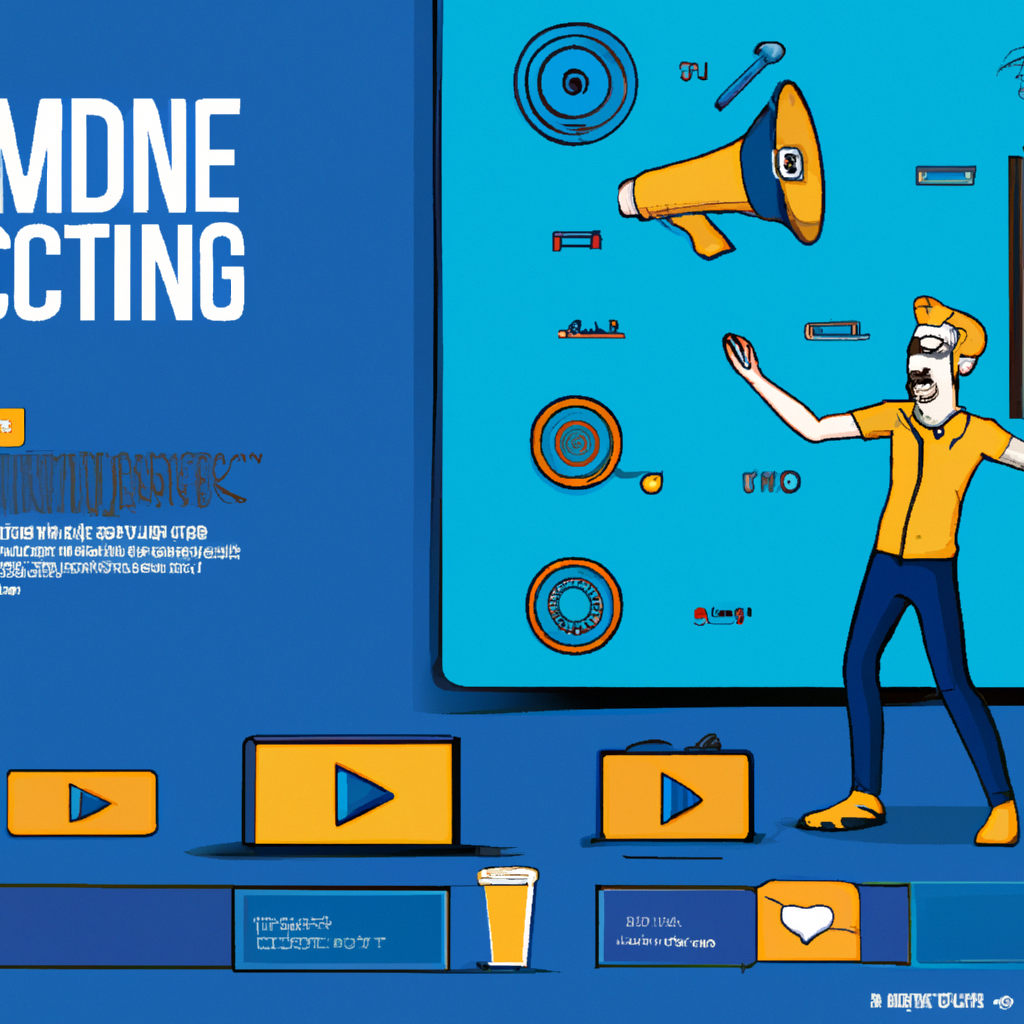Table of Contents
- Creating Compelling Video Content for Marketing
- Understanding the Impact of Video Content in Marketing
- Key Strategies for Creating Compelling Video Content
- Identifying Your Target Audience
- Storytelling with a Purpose
- Ensuring High-Quality Production
- Optimizing Video Length
- Platforms for Video Distribution
- Measuring the Success of Video Content
- Case Studies of Successful Video Marketing Campaigns
- Conclusion: Key Takeaways in Creating Compelling Video Content for Marketing
Creating Compelling Video Content for Marketing

In today’s digital age, video content has become a pivotal aspect of marketing strategies across various industries. With the increasing consumption of video content by audiences worldwide, businesses are leveraging this medium to engage, inform, and influence potential customers. This article explores the essentials of creating compelling video content for marketing, offering insights, examples, and practical tips to enhance your video marketing efforts.
Understanding the Impact of Video Content in Marketing
Video content has transformed how brands connect with their audience, providing a dynamic way to present information and entertain viewers simultaneously. Statistics reveal that video content is not only preferred by consumers but also leads to higher engagement rates compared to other forms of content.
- Videos increase consumer understanding of a product or service by 74% (Source: HubSpot).
- Embedding videos in landing pages can increase conversion rates by more than 80% (Source: EyeView).
- Social video generates 1200% more shares than text and image content combined (Source: G2 Crowd).
These statistics underscore the significant role that video content plays in modern marketing strategies, driving both engagement and conversions.
Key Strategies for Creating Compelling Video Content
Identifying Your Target Audience
Before diving into video production, it’s crucial to define who your target audience is. Understanding your audience’s preferences, pain points, and behaviors will guide the tone, style, and content of your video. Tailoring your video to meet the specific needs and interests of your target demographic increases the likelihood of engagement and conversion.
Storytelling with a Purpose
Storytelling is at the heart of compelling video content. A well-crafted story can captivate an audience, evoke emotions, and make your brand memorable. When creating video content for marketing, focus on narratives that resonate with your audience, reflect your brand values, and have a clear message. Whether it’s a customer testimonial, a behind-the-scenes look, or a product demonstration, the story should be relevant and add value to the viewer’s experience.
Ensuring High-Quality Production
While the story is essential, the quality of the video also plays a critical role in how your content is perceived. High-quality visuals and clear audio can make a significant difference in retaining viewer attention and enhancing the overall impact of your video. Investing in good lighting, professional editing, and perhaps even hiring experts can elevate your video content and make it more appealing.
Optimizing Video Length
The length of your video should align with the platform it’s intended for and the preferences of your target audience. For instance, videos on Instagram and Twitter perform better when they are short and to the point, while YouTube or Facebook might allow for longer formats. Keeping videos concise and engaging is key to maintaining viewer interest.
Platforms for Video Distribution
Choosing the right platforms for distributing your video content is crucial for its success. Each social media platform has its unique features and audience demographics, which can influence the effectiveness of your video content.
- YouTube: Ideal for longer-form videos and detailed tutorials.
- Facebook: Great for live videos and engaging with a broad demographic.
- Instagram: Best for short, visually appealing content.
- TikTok: Perfect for viral, trendy, and entertainment-focused clips.
Understanding the strengths and audience of each platform will help you tailor your videos to fit the context of each channel, maximizing reach and engagement.
Measuring the Success of Video Content
To ensure that your efforts in creating compelling video content for marketing are effective, it’s important to measure performance and make data-driven decisions. Key performance indicators (KPIs) such as view count, share rate, watch time, and conversion rate provide insights into how your video is performing and what impacts it has on your marketing goals.
- View Count: Indicates the total number of views and helps gauge initial interest.
- Engagement Rate: Measures interactions like shares, comments, and likes.
- Conversion Rate: Assesses how effectively the video drives viewers to take a specific action.
Regularly analyzing these metrics allows you to refine your strategy and improve the quality and effectiveness of your video content.
Case Studies of Successful Video Marketing Campaigns
Examining successful video marketing campaigns can provide valuable lessons and inspiration. For instance, Dove’s “Real Beauty Sketches” campaign not only went viral but also sparked conversations about beauty standards, deeply resonating with its audience. Similarly, Blendtec’s “Will it Blend?” series demonstrated product effectiveness while entertaining viewers, significantly boosting sales.
These examples highlight the importance of creativity and emotional connection in creating compelling video content for marketing.
Conclusion: Key Takeaways in Creating Compelling Video Content for Marketing
Creating compelling video content for marketing is a powerful way to engage and connect with your audience. By understanding your audience, employing strong storytelling, ensuring high-quality production, choosing the right platforms, and measuring success, you can significantly enhance your marketing efforts. Remember, the most successful video content is not only about selling a product but also about telling a story that resonates with your viewers.
With these strategies in mind, you are well-equipped to create video content that not only captivates but also converts, setting your brand apart in the competitive digital marketplace.


